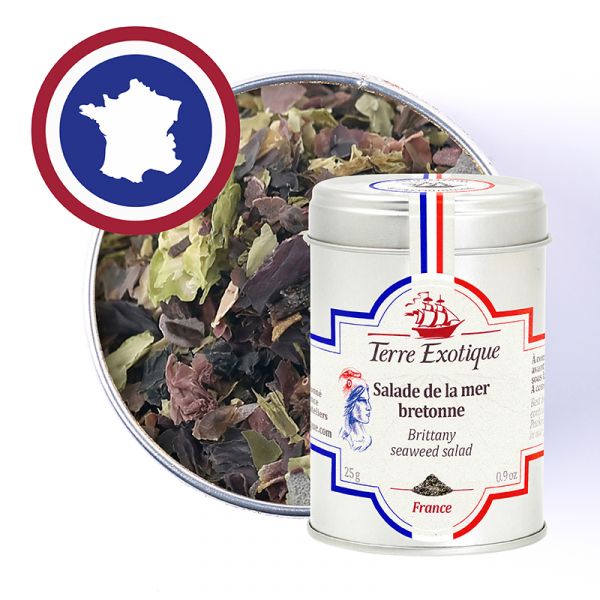Seaweed salad
6.9




Details
Where to use this seaweed salad
Our recipe ideas for this Breton seaweed salad:• Seaweed butter: add 2 tablespoons of these flakes to your butter before shaping it (check out our recipe below);
• Seaweed sushi: roll your sushi in 2 tablespoons of Breton seaweed salad;
• Mussels with seaweed salad: add 2 teaspoons of seaweed salad to your mussels at the end of the cooking process;
• Cod en papillote with seaweed: sprinkle 1 teaspoon of seaweed salad on your cod at the end of the cooking process;
• Seaweed omelette: add 1 teaspoon of seaweed salad to your eggs.
Seaweed butter recipe
The aromas of seaweed salad
This mix of different French seaweeds releases savoury and fresh notes. The notes of iodine will enchant your fish, oysters and all your seafood.What seaweeds does this mix contain?
This Breton seaweed salad contains dulse, sea lettuce and laminaria. Dulse is part of the Palmariaceae family and grows off the coasts of Brittany. Sea lettuce is part of the Ulvaceae family and Laminaria is part of the Laminariaceae family. These three seaweeds grow under the sea, so they must be harvested at low tide and their harvest is only authorised from 1st April to 31st December so that their natural regeneration is not disrupted.Since when is seaweed used as a food?
Traditionally, in South-East Asia seaweed has been used as a food since the 5th century. In Brittany, seaweed became a foodstuff much later at the beginning of the 19th century when it was harvested off the North Finisterre coast by local fishermen who collected the seaweed. In Brittany, seaweed was initially used to feed cattle.More Information
| Allergen | Absence |
|---|---|
| Native country | France |
| Ingredients | dulse, ulva, kelp. |
| TRACES EVENTUELLES D'ALLERGÈNES | céleri, sésame, moutarde, fruits à coques. |
 Français
Français 